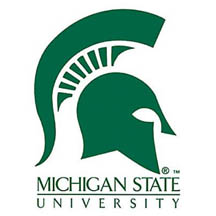Research and Development | Progressive Turf

Progressive Turf Research Report
Progressive Turf approached The University of Florida to test its seed extract liquid foliars. Along with the usual evaluations of quality and color statistical evaluation of Density, Algae and Root Development were rated. The findings of this research prove particularly valuable to the golf course superintendent and turf manager . He/she will better understand the dramatic role these extremely beneficial products can play, in developing and maintaining quality putting and turf surfaces. Dr. John Cisar evaluated the performance of weekly applications of several foliar fertilizers on greens height Tifeagle Bermudgrass. The research plots were rated for Density, Quality / Color, and Algae. All data was subject to statistical analysis and significant means were identified. Treatments were initiated on February 21, 2003 and continued on a weekly basis until completion of the trial.

Fertilizer Regime Effect on Creeping Bentgrass
Materials and Methods This study was conducted on a creeping bentgrass putting green located at the Hancock Turfgrass Research Center on the campus of Michigan State University. To simulate winterkill injury, a creeping bentgrass putting green was sprayed with glyphosate in the late autumn of 2006 and again the last week of March 2007 to ensure complete kill. The area was prepared for re-seeding using the job-saver attachment on a greens aerifier, which dimpled the surface of the putting green to create a seed bed. A-4 Creeping bentgrass was seeded on May 1st at 2lbs./1000ft.2 and topdressing was applied at 115 lbs./1000ft.2 after seeding. The eight treatments were then applied according to their respective protocols. The experimental design was a randomized complete block design with 3 replications. Plots were 4 x 6 ft., and were mowed at a height of 0.145 inches starting one week after establishment. Granular fertilizer applications were applied with a hand shaker and liquid applications were applied with a backpack sprayer.

Surface Moisture Comparison on ‘L-93’ Creeping Bentgrass Among Foliar Fertility Treatments
Materials and Methods A one-month surface moisture study was conducted from November 16, 2004 through December 8, 2004 on an ‘L-93’ creeping bentgrass research green established in May, 2002. Two Progressive Turfliquid fertilizers (10-3-5 and 5-0-7) and one granular fertilizer (18-3-18) were evaluated to determine the amount of surface moisture remaining on the green after application. Both high and low rates of each product were evaluated. The three fertilizers studied are part of a separate two-year replicated foliar fertility study. Surface moisture was recorded weekly by swiping a paper towel over the treated plot and then immediately placed in a plastic bag and weighed. The total amount of moisture in each bag ranged from 0.05 to 1.68 grams. This indicates that after mowing the green at sunrise and evaluating surface moisture content 2 hours later, insignificant moisture remained on the bentgrass green surface. Also, regardless of fertilizer type (foliar or granular) and rate, no significant differences were reported among surface moisture.

Progressive Turf Winter Damage Information
Need To Get Damaged Areas Back In Play? If you do experience some type of damage this year, or are planning an aerification, Progressive Turf will work with you to set up a program to get those areas back in play quicker. Conventional fertility programs are slow to become available to the turf in the colder temperatures of spring and tend to promote vertical growth when they do release. Progressive Turf gets you growing with 40% less salt than conventional chemical fertilizers due to the patents pending soybean & plant extract.